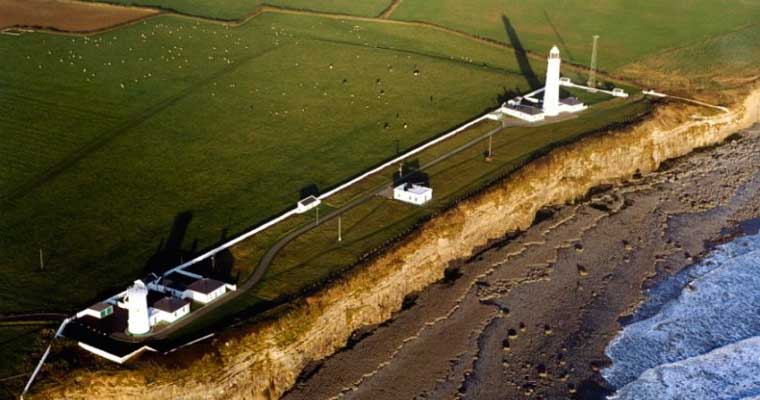Sounding off
Jen Allen visits – and crucially hears – Nash Point’s splendid foghorn, a masterpiece of joyously high-decibel engineering. She recorded it too, so you can experience it yourself.

It’s not often that you get a personal tour of a historic building with a cup of tea thrown in for less than a fiver these days, but that’s what I got after my two-hour drive from Bristol, which took me across the Bristol Channel to Glamorgan, South Wales, to visit Nash Point Lighthouse and, more specifically, its wonderful restored foghorn.
The lighthouse was originally built as a response to the wreck of the Frolic in 1831, a paddle steamer that was nearing the end of a regular journey, and came a cropper on Nash Sands in Glamorgan. All 80 passengers and crew were lost, and in response to the tragedy, Trinity House completed two lighthouses the following year.
The fog signal was added in 1906, and now stands slightly apart from the main buildings. It’s in the middle of the picture above: a squat whitewashed square house with a bright green stripe and small windows, which looks like it might bend under the weight of the two enormous trumpets that protrude from the top, with black and gaping oval mouths.
There are only a handful of such working horns in the UK, although there are other electric fog signals, which sounds something like a cluster of car horns, and are far less impressive. The Nash Point foghorn is powered by compressed air, generated by great hulking diesel engines, replaced in 1966, and now restored and repainted in classic Victorian thick green gloss.
It’s these that I watched rumble into life like a pair of giant immoveable steam engines: a juddering display of steel and power, pushing air into two great ochre metal cannisters. The pressure gradually builds over a few minutes or so, and once the needles and dials show that it’s high enough, the foghorn can then be sounded. Its roar is deafening and glorious: a colossally rich booming honk, which carries for miles around.
The two trumpets point in opposite directions, and due to the nature and impurity of the metal there’s a slight dissonance between the two. Successive honks can also be different, as the fog signal often needs to “clear its throat” before it generates a really clear sound, like the trumpeting of an industrial bull elephant. You can hear it for yourself when it’s sounded on the first Saturday and third Sunday of each month, usually around 2.30pm and 4pm. Or just click Play below. Marvellous…
Opening times: until 26 October, open Saturdays, Sundays and bank holidays, plus Wednesdays during local summer school; 2pm-5.30pm. Times are subject to alteration depending on the operational requirements of Trinity House, weddings being carried out at the lighthouse, group bookings, etc. To check, or for more information about using the lighthouse for a wedding or civil partnership ceremony, call the attendant Chris Williams: 07850 047721.
Admission: adult: £3.50; children (2-16 years): £1.50; family (two adults and up to three children): £10.





